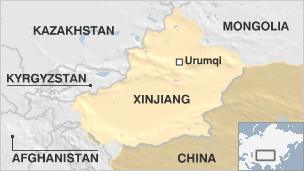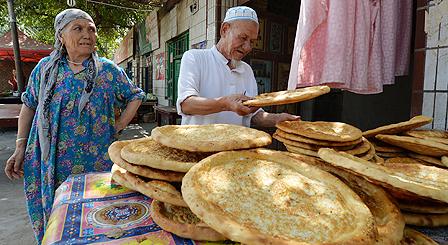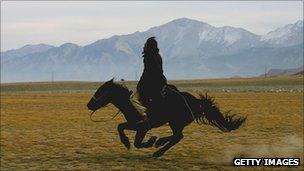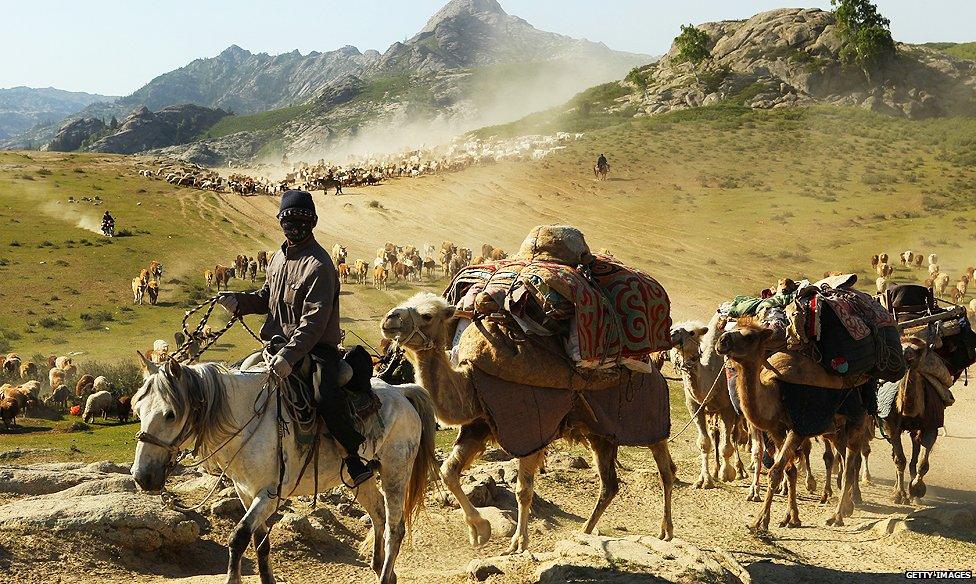Xinjiang profile - full overview
- Published

China's Xinjiang province is the country's most westerly region, bordering on the former Soviet states of Central Asia, as well as several other states including Afghanistan, Russia, and Mongolia.
The largest ethnic group, the Muslim, Turkic-speaking Uighurs, has lived in China's shadow for centuries. The region has had an intermittent history of autonomy and occasional independence, but was finally brought under Chinese control in the 18th century.
Economic development of the region under Communist rule has been accompanied by large-scale immigration of Han Chinese, and Uighur allegations of discrimination and marginalisation have been behind more visible anti-Han and separatist sentiment since the 1990s. This has flared into violence on occasion.

Xinjiang, about the size of Iran, is divided into the Dzungarian Basin in the north and the Tarim Basin in the south by a mountain range.
The economy of this once agricultural region has developed fast since 1949, and oil and petrochemicals now account for about 60 per cent of its GDP. It is also an important trade and pipeline route into Central Asia and beyond.
The region was contested by various Turkic groups, Mongols and the Chinese until the 18th century, when the Chinese Qing Dynasty brought the whole area under its control.
Russia's conquest of the neighbouring Central Asian states of Kokand and Bukhara led to a renewed struggle for control over the area, with the Kokand general Yaqub Bek establishing a de facto independent state in Kashgar in 1865. China gradually regained control of the region and formally set up Xinjiang Province in 1884.
Russian influence remained strong, especially during the rule of various warlords after the fall of the Qing Dynasty in 1912. The Soviet Union supported an Uighur-led separatist East Turkestan Republic in the north of the region in 1944-1949, but helped to extinguish it when the Communists took over in China proper.

Xinjiang has numerous ethnic groups, the largest of which are Uighurs and Han Chinese
Communist China established the Autonomous Region in 1955, and began to encourage Han Chinese to settle there in new industrial towns and farming villages run by the quasi-military Xinjiang Production and Development Corps. China also set up its nuclear testing facility at Lop Nur in the Tarim Basin, conducting the first test there in 1964.
In the 2000 census Han Chinese made up 40 per cent of the population of Xinjiang, excluding large numbers of troops stationed in the region and unknown numbers of unregistered migrants, and Uighurs accounted for about 45 per cent.
Ethnic unrest
International attention turned to Xinjiang in July 2009 when bloody clashes between Uighurs and Han Chinese in the region's main city, Urumqi, prompted the Chinese government to send large numbers of troops to patrol the streets. Nearly 200 people were killed in the unrest, most of them Han, according to officials.
Protests against Chinese rule had already emerged in the 1990s, to which the Chinese authorities reacted forcefully. These culminated in clashes in the city of Yining (Ghulja in Uighur) in 1997 in protest at the execution of 30 alleged separatists. The authorities reported nine dead in the violence, although separatists said more than a hundred protestors were killed.
Protests resumed in March 2008 in the cities of Urumqi and Hotan, and spread to Kashgar and elsewhere through the summer - coinciding with the Olympic Games in Beijing. There were reports of bus bombings and attacks on police stations.

Steppes, deserts and mountains cover most of Xinjiang
The main Uighur groups abroad are the separatist East Turkestan Liberation Movement, founded in Turkey in the late 1990s, and the World Uighur Congress, which was set up in Germany in 2004.
The latter is led by Rebiya Kadeer, a businesswoman and politician who broke with Beijing over the Ghulja clashes in 1997 and spent years in prison before being allowed to emigrate in 2005. China has said the "East Turkestan Islamic Movement" is behind separatist attacks, but exiled Uighurs and independent specialists on the area have cast doubt on whether such an organisation exists.
Beijing has sought to deal with the unrest with a mix of repression and efforts to stimulate the region's economy, including through increased investment by state-owned firms.
In 2013 there was a sudden upsurge in violence, when the authorities accused separatist "terrorists" of attacks in Kashgar that left 21 dead in April. There was further violence in the summer and in 2014, and exiled Uighur groups accused China of exaggerating the threat in order to justify repression.

Xinjiang is China's largest administrative region and borders eight countries